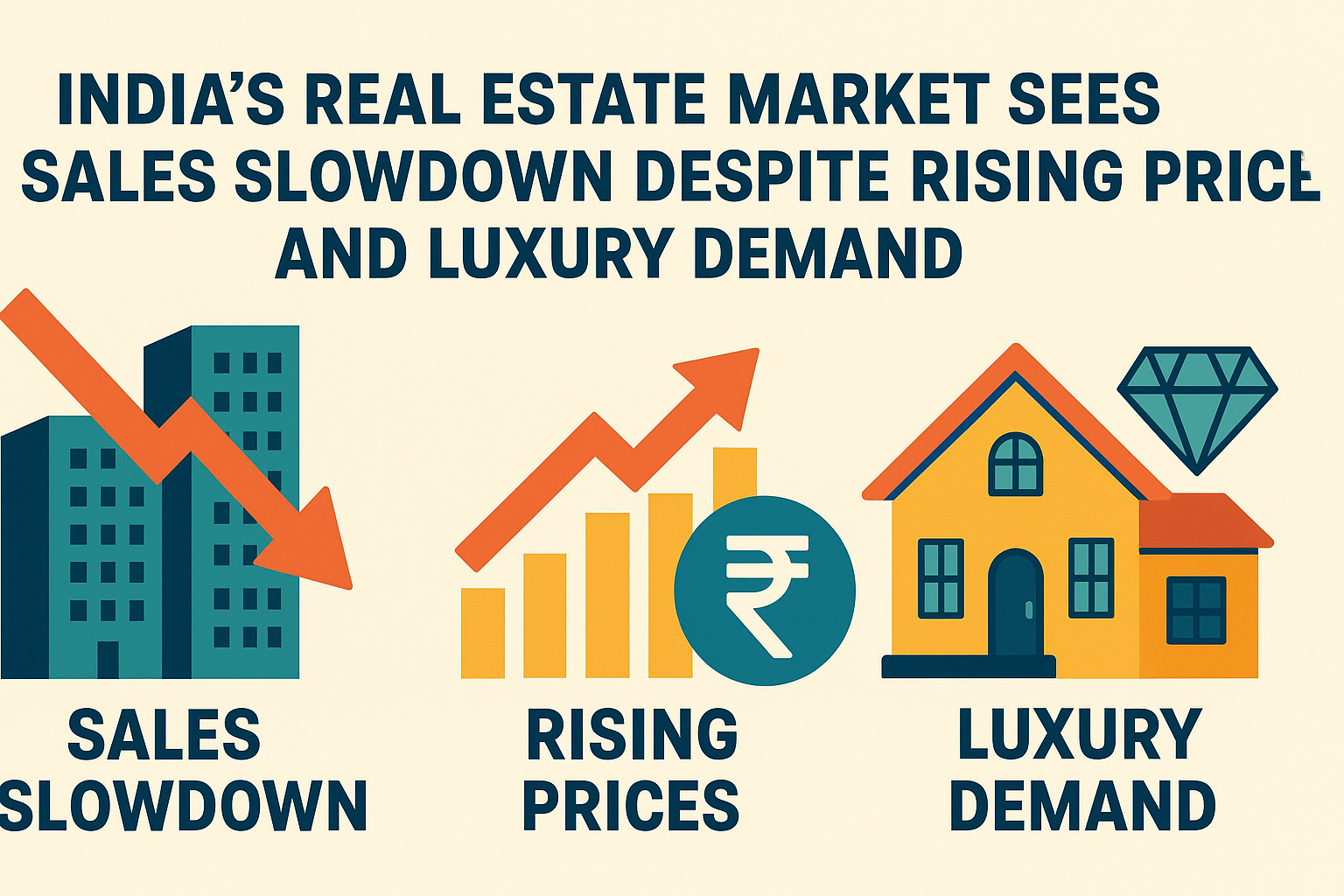The Indian real estate sector, long seen as a barometer for economic activity and consumer sentiment, is showing signs of strain. Despite booming luxury sales and record-high property prices in certain markets, new data from JLL Research reveals a dip in residential sales volumes across India’s top cities in the first half of 2025.
What’s Happening?
According to JLL’s latest report, residential sales volumes have dropped in double digits across major cities. The data shows:
- Bengaluru and Delhi-NCR: Around 15% decline in sales volumes.
- Mumbai Metropolitan Region (MMR): Also down 15%.
- Kolkata: The sharpest drop, at 29%.
This slowdown comes even as premium and luxury real estate segments continue to draw attention from high-net-worth buyers. For instance, new entrants like DF in Mumbai are targeting the high-end market, while luxury property prices in certain circles are “going through the roof.”
Why the Decline?
The primary culprit appears to be rising prices, which are deterring many potential homebuyers. NCR and Bengaluru have seen 14% annual price growth, while Mumbai prices have risen 8% and Hyderabad 11%.
This price surge, coupled with higher construction costs, has made homes less affordable and squeezed developer margins. As a result, developers have been cautious with new project launches, particularly in the mid-tier and affordable segments.
The Inventory Challenge
One of the clearest warning signs is the surge in unsold inventory, particularly in higher price brackets:
- ₹2–5 crore homes: Unsold inventory up 52% in H1 FY25.
- ₹20–50 crore luxury homes: Unsold inventory up 37%.
This suggests that while supply in the premium segment is increasing, sales velocity is slowing. Analysts warn that the market may be at the cusp of a correction, with developers likely to moderate launches to avoid an oversupply situation.
Who’s Most Affected?
The slowdown is not uniform. While luxury projects in prime city areas continue to attract wealthy buyers, mid-segment and upper-middle-class buyers are showing more caution. Cities like Kolkata and Bengaluru where a significant portion of demand comes from working professionals are feeling the pinch as home loan EMIs climb due to high interest rates.
Developers with large exposure to mid-tier housing in NCR, Bengaluru, and MMR are particularly vulnerable. South-based players have also reported weaker volumes compared to last year.
When Did This Trend Start?
The cooling of sales began to show in late 2024, but it has become more pronounced in the first half of 2025. Initially, unsold inventory was at multi-quarter lows due to post-pandemic pent-up demand. However, as prices rose sharply and economic uncertainties lingered, buyer sentiment shifted to a more cautious stance.
Where Is the Market Headed?
Industry experts believe that double-digit price growth is unsustainable and expect it to slow to single digits in the coming quarters. If the slowdown in sales persists, developers may have to adjust pricing strategies, especially in the ₹2–5 crore segment, to clear inventory.
A potential correction could also be influenced by:
- Interest rate movements: If rates ease, affordability could improve.
- Government policy measures: Any push for affordable housing could stimulate demand.
- Economic growth trends: A slowdown in hiring or income growth could further dampen sentiment.
How Are Developers Responding?
Many top developers are rethinking their launch plans. Some are focusing more on luxury and ultra-luxury projects where margins are higher, while others are considering smaller, phased launches to reduce inventory risk.
At the same time, marketing efforts are shifting toward highlighting exclusivity, amenities, and lifestyle benefits to appeal to affluent buyers who are less sensitive to price hikes.
Conclusion
The Indian real estate market in 2025 is a mixed bag: luxury sales are strong, prices are at record highs, but mid-segment sales volumes are dropping. The surge in unsold inventory especially in the ₹2–5 crore range is a key red flag. While developers remain optimistic about long-term demand, the short-term outlook points to a cooling phase that could bring price growth down to more sustainable levels.
Buyers waiting for a correction may soon see opportunities, but for now, the sector is walking a fine line between resilience and slowdown.
`


